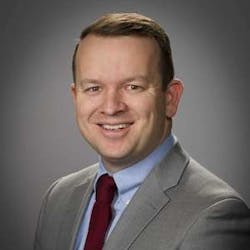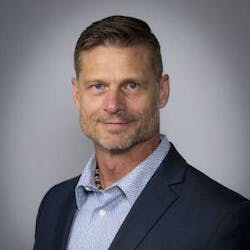When Hemlock Semiconductor (HSC) was founded in 1961 its goal was to produce the world's purest manmade polycrystalline silicon, which has since become a foundational building block for both the semiconductor microelectronics device industry and the solar industry.
However, the chemical processes utilized for polysilicon manufacturing is consumes immense amounts of electricity. So much so that HSC is the largest electricity consumer in Michigan. “As such, energy management is extremely important to us,” says Phillip Rausch, solar commercial manager for HSC.
Eye on energy
Dating back to the early 1990s, HSC had posted a steady 3% year-over-year energy efficiency improvement, and the company continues to have best-in-class kilowatt hour per kg consumption. “This is important because energy efficiency has direct linkage to the carbon footprint of our material. And, when customers choose to go solar, they're doing it in part for cost drivers, but also for carbon benefits,” says Rausch. “We're happy to be able to differentiate our material on that carbon footprint performance.”The other part of energy management for HSC is really when during the day the company uses electricity. “As a homeowner, you may get notifications from your electric utility notating peak power pricing between, for instance, three o'clock in the afternoon and 11 o'clock at night,” says Rausch. “They are trying to send the market signal to say when using electricity is good for the grid. As an industrial manufacturer, we have the same market signals coming at us.”
HSC has taken the notifications to heart, and roughly five years ago it started a journey to use planning algorithms to improve electricity consumption. “The goal has been to look at both the energy efficiency side, and really try to drive towards thermodynamic and kinetic factors that are ongoing in our manufacturing processes – all while trying to derive scientific findings out of the data that's coming out to drive those energy efficiency improvements,” says Rausch. “We're also utilizing TIBCO's Spotfire to program our facility to manipulate when we use that electricity.”
Production adjustments
Like many progressive manufacturers, HSC knows with relative certainty what its annual production forecast looks in terms of demand. It also knows when power is expensive. “When you use those two factors it allows you to properly plan the production schedule,” says Rausch. “If you think of an industrial energy user as a relatively flat line we consume about the same amount of electricity at all hours of the day. The utility company really likes industrial users because they have a really flat demand profile.”
What HSC been able to do for the utility is counterbalance residential users. “When they spike, we're going down in usage, and vice versa,” says Rausch. “This helps the utility manage the grid for all users by avoiding the deployment of extra capital resources, and they don't have to turn on the highest cost production units. It helps us because we're able to lower our cost of electricity consumption.”
It's also enabled Hemlock to lower its carbon footprint. “We've been working with a third party that analyzes it for us on what our actions do, and luckily for us what we're finding is increasingly cost and carbon go together,” says Rausch. “When cost goes up, the carbon footprint of the grid goes up. When costs go down, it's because the marginal resources that are being used that are less carbon intensive. It's been fantastic from a production standpoint, where we've got availability in our production assets, schedule, and we're also gaining the benefits that our customers are more and more interested in every day.”
Road ahead
"By democratizing both the data, the analytics platform, and visualization, we are enabling innovation opportunities for the masses with 200+ professionals driving improvements in the organization in very short order," says Carey. "Now we're focused on the data, data quality, and really driving more the AI and machine learning capability within our platform."
As HSC continues to build up its analytics and AI platforms, the opportunity exists to drill down and better understand the application of digital twin in various contexts of the business, whether it is overall modeling of the business or something very specific to a unit operation. "This gives us more data and we can make those improvements in the cloud and then be able to apply findings,” says Carey. “Historically we would take a subset of the equipment, and we dedicate that for very short, or very long-term return in terms of timing and understanding and make those process improvements. With this we're accelerating the learnings as well as the value back to the business."
Bottom line: Decarbonization is not just a nice to have, explains Rausch. “It's imperative to be able to participate. This tool allows us to bring all of those pieces together to drive towards a universal goal,” he says. “We increasingly see an opportunity for this to be deployed in a way that we can really leverage our sustainability leadership in the marketplace and continue to drive it forward.”





